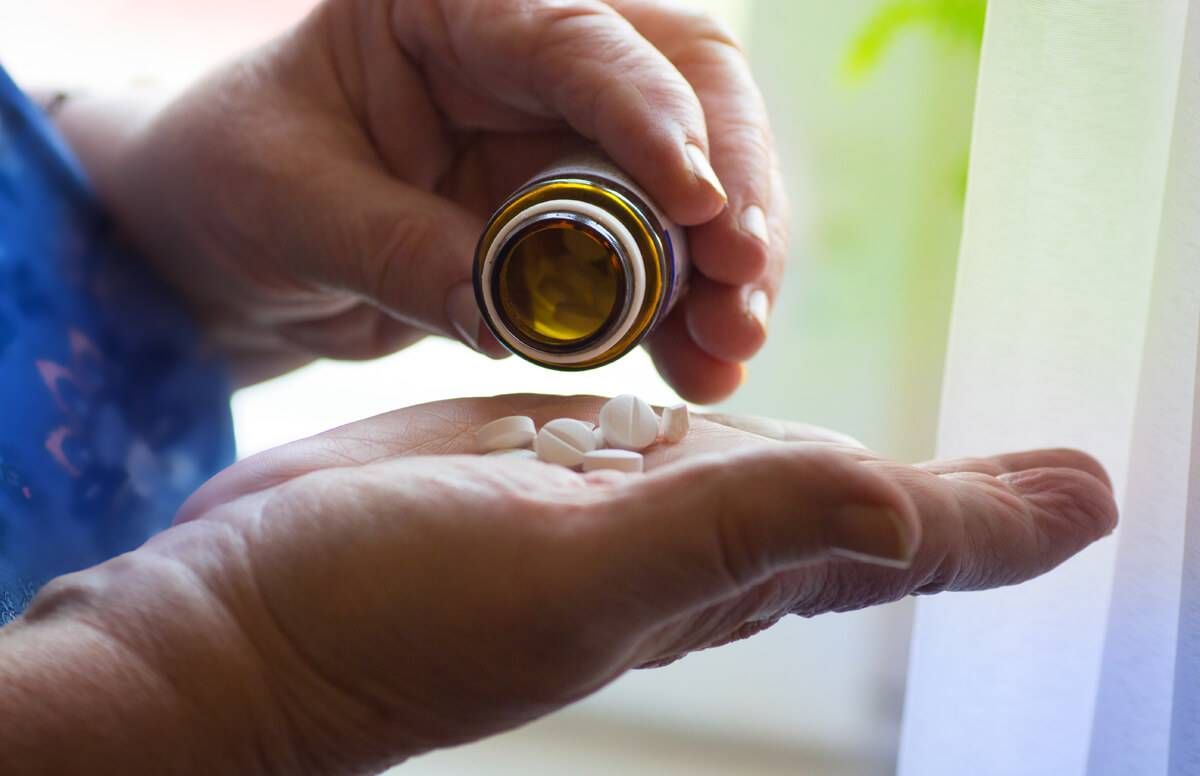Drug Prices in TV Ads: How Transparent Are They?
The Trump administration is demanding list prices, but that's often not what you pay
(Update: On July 8, 2019, a federal judge blocked the Trump administration order that would have required drug companies to include prices in their TV ads. A Health and Human Services spokeswoman said the administration "will be working with the Department of Justice on next steps related to the litigation." Below is the May 2019 Next Avenue article on the president's executive order.)

A website launched by pharmaceutical giant Eli Lilly earlier this year leads with a daunting statement about the price of its diabetes drug Trulicity: “Drug prices can be confusing,” it says. That’s for sure, and thanks to a new mandate from the Trump administration, consumers could find themselves even more confused.
The U.S. Centers for Medicare & Medicaid Services said on May 8 that it will require drug makers to include “list prices” in television ads for all medicines covered by Medicare or Medicaid that cost $35 or more for a one-month supply or for a full course. (Since private insurers and employer-run plans typically cover these drugs, too, the rule is likely to affect most prescription medications touted on TV.)
Patient advocacy groups have endorsed the rule, believing that TV drug ads often lead people to high-priced medications. According to a recent New York Times story, the heavily advertised Humira drug for rheumatoid arthritis has an average retail price of about $5,700 a month, for instance.
The New Rule for Drug Costs in TV Ads
If this rule takes effect — and the pharmaceutical lobby is fighting it — all drug companies will start disclosing prices in TV ads by the end of July. Before this rule, drug companies were required to disclose a medication’s major side effects, but not its price.
The confusion for consumers revolves around “list price.”
President Trump suggested that requiring drug companies to trumpet the high list prices would encourage them to slash them.
That’s the initial price charged to federal and private insurers and pharmacy benefits managers. It’s not the co-payment or retail price that most consumers end up paying. And list prices can be vastly different from the average American’s out-of-pocket cost for prescriptions.
Take Trulicity. Its list price is $759.40 per month, according to Lilly. But most people with private insurance will pay no more than $30 a month in co-pays for the drug. Medicare beneficiaries could pay as little as $3 a month or as much as $180, depending on their coverage. Some Medicaid patients won’t pay anything, because they live in states that have eliminated co-pays for prescription drugs.
And that’s the problem with the new rule, drug-price experts say.
When President Donald Trump proposed the rule a year ago, he suggested that requiring drug companies to trumpet the high list prices of their products would encourage them to slash them. The administration notes that co-pays are often based on list prices.
But about 91% of Americans have health insurance of some kind. So, for those people, the list-price information will be irrelevant. And, according to the administration, just 47% of Americans have high-deductible health insurance plans requiring them to essentially pay the price in the ads until they meet their deductible.
“It’s targeted more at the drug companies than it is at the patients,” says J.B. Silvers, professor of health care finance, banking and finance at Case Western Reserve’s Weatherhead School of Management. “It’s health policy through public humiliation.”
The Drug Industry’s Approach to Price Transparency
A few companies, including Eli Lilly, have already started airing some drug-price information, in response to a voluntary policy from the industry’s trade group, PhRMA. That policy, issued last October, suggests that all direct-to-consumer TV ads steer patients to websites that disclose list prices and average out-of-pocket expenses for drugs.
Lilly adopted that strategy in January with Trulicity, airing an ad that directs viewers to the website Lillypricinginfo.com or to an 800 number with the same information. The company vowed to add the website and 800 number to all TV ads for its medicine this year.
Johnson & Johnson took the PhRMA policy a step further in March, debuting an ad for its blood thinner Xarelto that includes its $448 list price, plus a range of expected out-of-pocket costs. After the side effects are listed at the end of the commercial, a screen pops up showing the full price of Xarelto on a sliding scale, with the words “most patients pay between $0 and $47 per month.”
The websites for Xarelto and all other J&J prescription products advertised on TV include additional details about how much consumers will pay based on their insurance plans.
Going to Websites
TV viewers who are interested in the cost of drugs they see advertised can get a better idea of what they’ll pay by going to the websites for the individual medications, says Dr. Tod Cooperman, founder and chief executive officer of PharmacyChecker.com, a company that monitors and compares drug prices.
Some of those sites will provide details about their list prices and out-of-pocket costs. Many point people to assistance programs offered by the sponsoring drug company, such as coupons that could bring some co-pays down to zero.
Beware, though: Qualifying for an assistance program is challenging.
“They can be hard to utilize, and you have to meet a lot of qualifications to get the drugs for free,” including the standard industry practice of proving that your income is under $30,000 a year, Cooperman says.
The public can also visit a new website launched by PhRMA in response to the Trump administration’s rule, Medicineassistancetool.org. It lets you search for discount programs by drug name. Several private insurers have similar search tools on their sites, as does PharmacyChecker.
Couching Price Information in TV Ads
PhRMA is already protesting the government’s new TV ad rule, saying that requiring companies to implement the new standards presents “operational challenges” and may violate their First Amendment right to free speech. And U.S. Health and Human Services Secretary Alex Azar has conceded the administration can’t force drug companies to comply with the rule. It’s expecting drug companies to sue each other, which Azar has called a “quite effective mechanism of enforcement.”
That all raises questions about just how many pharma advertisers will ultimately follow Lilly’s and J&J’s efforts to be transparent about their pricing practices in TV ads.
Will forcing drug companies to disclose list prices actually lead them to lower prices? That’s a matter of fierce debate.
One recent study published in the journal JAMA Internal Medicine found that when consumers were shown ads with price information for fictional drugs, their interest in the most expensive medicines fell by 43%.
To quell concerns about high prices, drug companies can simply tweak the language in the ads, says the study’s co-author, Ge Bai, associate professor of accounting, health policy and management at Johns Hopkins. In the study, when the same ads included language explaining that insurance coverage or discounts would result in lower out-of-pocket costs, demand for those products stayed strong.
And if there are more TV ads with a big gap between their list price and the real cost people pay? “I do think some consumers will be confused,” says Bai.


